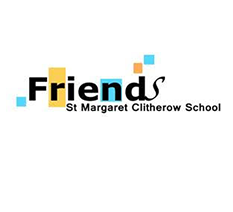Art and Design
Intent
At St Margaret Clitherow primary RC, we value, and are dedicated to, the teaching and learning of all aspects regarding Art and Design Technology; we see this as a fundamental part of school life. We believe that by providing an ‘Arts Rich Curriculum’ we can contribute to the quality of our children’s lives, both within and beyond school. We understand that the purpose of Art and Design education is to give pupils the skills, concepts and knowledge necessary for them to express their responses to ideas and experiences in a visual or tactile form; the appreciation and enjoyment of the visual arts enriches all our lives.
Implementation
As a school and, in accordance with the National Curriculum’s expectations, we aim to ensure that all pupils:
- Produce creative work, exploring their ideas and recording their experiences.
- Become proficient in drawing painting, sculpture and other art, craft and design techniques.
- Evaluate and analyse creative works using the language of art, craft and design
- Know about great artists, craft makers and designers, and understand the historical and cultural development of their art forms
Class teachers are responsible for the teaching of art and design technology, which may, at times, be supplemented by professional artists/helpers. In order to develop knowledge of art further we aim to go on visits to galleries in London such as the National Gallery, Royal Academy in order to enrich our students’ knowledge of art.
Impact
Creative experiences contribute enormously to children’s development and wellbeing.
Motor Skills: Many of the motions involved in making art, such as holding a paintbrush or making marks with a crayon, are essential to the growth of fine motor skills in young children, developing the dexterity that all children will need for writing.
Language Development: Making art, or just talking about it, provides opportunities to practise and extend vocabulary. Children can use descriptive words to discuss their own creations or to talk about what feelings are elicited when they see different styles of artwork.
Decision Making: We believe that Art and Design education strengthens problem-solving and critical-thinking skills. The experience of making decisions and choices in the course of designing and creating art carries over into other parts of life.
Visual Learning: Drawing, sculpting, threading and connecting all develop visual-spatial skills, which are more important than ever. Even before children can read they are taking in visual information. This information consists of cues that we get from pictures or three-dimensional objects from digital media, books and television.
Inventiveness: When children are encouraged to express themselves and take risks in creating art, they develop a sense of innovation that will be important in their adult lives.
Cultural Awareness: As we live in an increasingly diverse society, the images of different groups in the media may also present mixed messages. Teaching children to recognise the choices that an artist or designer makes in portraying a subject helps them to understand the concept that what they see may be someone’s interpretation of reality.
Art concepts
Design & Technology (DT)
Design and Technology prepares children to take part in the development of today’s rapidly changing world. Creative thinking encourages children to make positive changes to their quality of life. The subject encourages children to become autonomous and creative problem-solvers, both as individuals and as part of a team. It enables them to identify needs and opportunities and to respond by developing ideas and eventually making products and systems. Through the study of design and technology they combine practical skills with an understanding of aesthetic, social and environmental issues, as well as functions and industrial practices. This allows them to reflect on and evaluate present and past design and technology, its uses and its impacts. Design and technology helps all children to become discriminating and informed consumers and potential innovators. We live in a technological age, surrounded by artefacts and systems which have been produced, designed and made for us by other humans working together in a complex range of activities.
Design Technology in the curriculum
We plan using the National Curriculum.
We enhance the curriculum using progression grids.
Subject Progression grids are used to develop long term planning.
Teachers use the long term planning to plan units of work and deliver individual lessons.
















